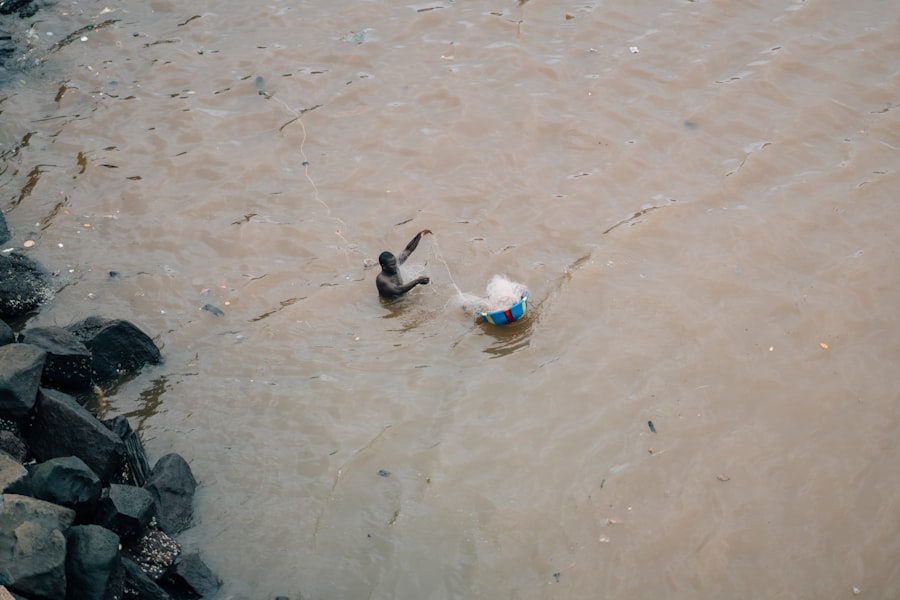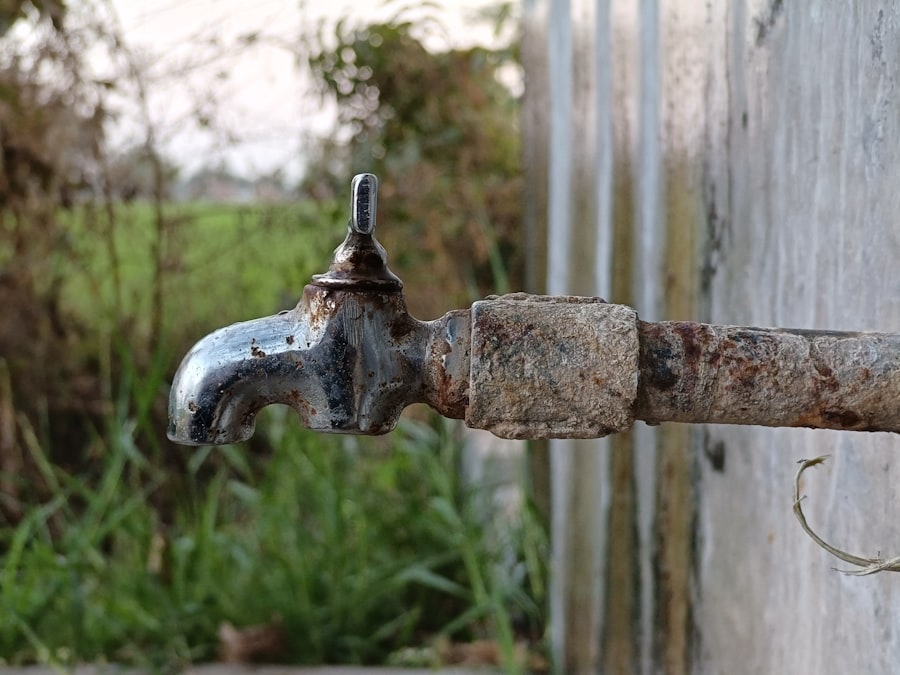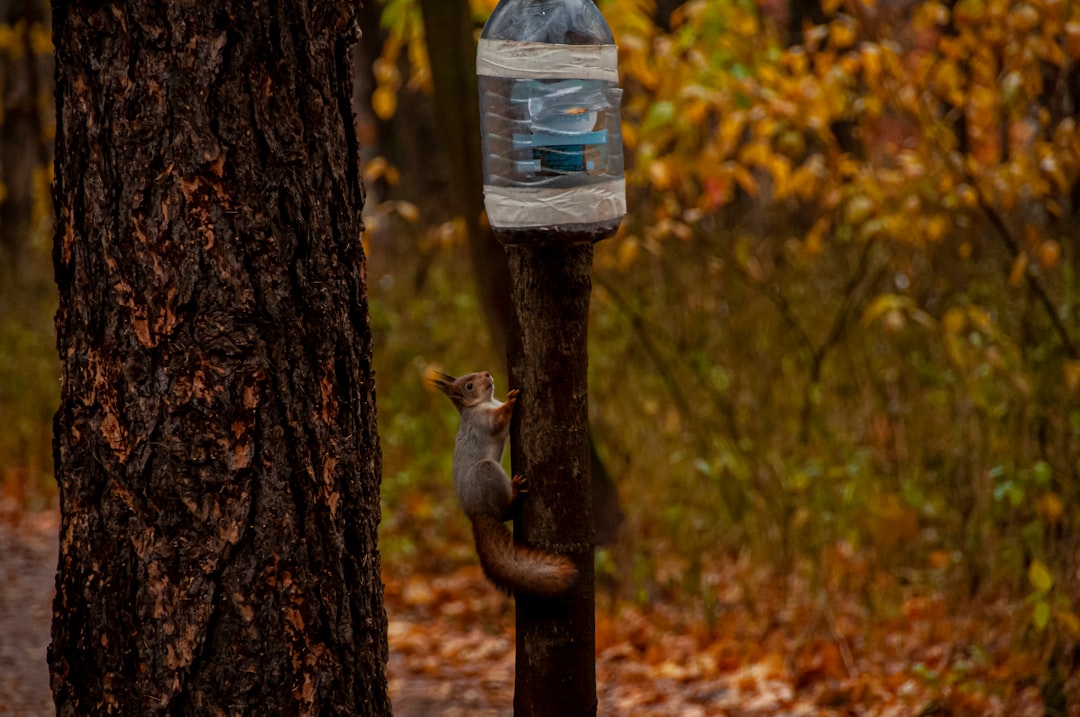The documentary “Thirsty Plains” serves as a poignant exploration of the pressing issue of water scarcity in the Great Plains region of the United States. This film delves into the intricate relationship between the land, its inhabitants, and the dwindling water resources that sustain them.
The documentary not only highlights the urgency of the situation but also seeks to inspire action and awareness among viewers. As the film unfolds, it captures the essence of life in the Great Plains, showcasing the resilience of communities that have thrived in this vast expanse for generations. However, it also reveals the stark reality that many residents face as they confront an uncertain future marked by water shortages.
By weaving together stories from farmers, families, and environmentalists, “Thirsty Plains” invites audiences to reflect on their own relationship with water and consider the broader implications of resource management in a changing world.
Key Takeaways
- Thirsty Plains Documentary sheds light on the water scarcity issue in the Great Plains
- Water scarcity has a significant impact on the communities in the Great Plains
- Agriculture plays a crucial role in exacerbating water scarcity in the Great Plains
- Water scarcity in the Great Plains leads to severe environmental consequences
- Solutions and innovations are being developed to address water scarcity in the Great Plains
The Impact of Water Scarcity on Great Plains Communities
Water scarcity has far-reaching effects on the communities that inhabit the Great Plains. As water resources become increasingly limited, residents find themselves grappling with a host of challenges that threaten their livelihoods and well-being. For many families, access to clean and reliable water is no longer a given; instead, it has become a daily struggle.
This scarcity not only affects drinking water supplies but also impacts sanitation and hygiene, leading to health concerns that disproportionately affect vulnerable populations. Moreover, the economic ramifications of water scarcity are profound. Farmers, who rely heavily on irrigation for their crops, face dwindling water supplies that jeopardize their harvests and financial stability.
As crop yields decline, so too does the local economy, which is often heavily dependent on agriculture. The documentary illustrates how these challenges create a ripple effect throughout communities, leading to increased stress and anxiety among residents who fear for their future. The emotional toll of living in a water-scarce environment cannot be understated; it fosters a sense of uncertainty that permeates daily life.
The Role of Agriculture in Great Plains Water Scarcity

Agriculture plays a dual role in the narrative of water scarcity in the Great Plains. On one hand, it is a vital economic engine that supports local communities and provides food for millions. On the other hand, it is a significant contributor to the depletion of water resources.
The documentary highlights how intensive farming practices have led to unsustainable water usage, with vast amounts of water being drawn from aquifers and rivers to meet the demands of crop production. The reliance on irrigation has transformed the landscape of the Great Plains, often resulting in over-extraction of water sources that cannot be replenished at the same rate. This unsustainable practice raises critical questions about the future of agriculture in the region.
As climate change exacerbates drought conditions and alters precipitation patterns, farmers must adapt to new realities while balancing their need for water with environmental stewardship. “Thirsty Plains” emphasizes the importance of rethinking agricultural practices to ensure that farming can coexist with sustainable water management.
Environmental Consequences of Water Scarcity in the Great Plains
| Environmental Consequences of Water Scarcity in the Great Plains |
|---|
| 1. Decreased water quality |
| 2. Loss of biodiversity |
| 3. Soil erosion |
| 4. Reduced agricultural productivity |
| 5. Increased desertification |
| 6. Disruption of ecosystems |
The environmental consequences of water scarcity in the Great Plains are profound and multifaceted. As water levels decline, ecosystems that depend on these resources begin to suffer. Wetlands, rivers, and lakes are shrinking, leading to habitat loss for countless species of plants and animals.
The documentary showcases how these changes disrupt local biodiversity and threaten the delicate balance of ecosystems that have existed for millennia. Additionally, water scarcity can lead to soil degradation and increased salinity, further complicating agricultural practices. As farmers struggle to maintain crop yields in an increasingly arid environment, they may resort to chemical fertilizers and pesticides that can harm soil health and water quality.
“Thirsty Plains” underscores the interconnectedness of these issues, illustrating how human actions can have cascading effects on the environment. The film calls for a holistic approach to water management that considers both human needs and ecological health.
Solutions and Innovations for Addressing Water Scarcity in the Great Plains
In response to the challenges posed by water scarcity, innovative solutions are emerging across the Great Plains. The documentary highlights various initiatives aimed at promoting sustainable water management practices among farmers and communities. These include advanced irrigation technologies that optimize water usage, such as drip irrigation systems that deliver water directly to plant roots, minimizing waste.
Moreover, “Thirsty Plains” showcases community-led efforts to restore natural waterways and wetlands, which can help recharge aquifers and improve overall water quality. By collaborating with local organizations and government agencies, residents are finding ways to implement conservation practices that benefit both people and the environment. The film emphasizes that while challenges remain daunting, there is hope in the form of grassroots movements and technological advancements that can pave the way for a more sustainable future.
The Intersection of Indigenous Rights and Water Scarcity in the Great Plains

The issue of water scarcity in the Great Plains is intricately linked to Indigenous rights and sovereignty. Many Indigenous communities have long-standing relationships with the land and its water resources, viewing them as sacred elements essential to their cultural identity. “Thirsty Plains” sheds light on how these communities are disproportionately affected by water scarcity due to historical injustices and ongoing marginalization.
The documentary features voices from Indigenous leaders who advocate for their rights to access clean water and protect their ancestral lands from exploitation. They emphasize the importance of traditional ecological knowledge in managing water resources sustainably. By incorporating Indigenous perspectives into discussions about water management, there is potential for more equitable solutions that honor both cultural heritage and environmental stewardship.
Government Policies and Water Management in the Great Plains
Government policies play a crucial role in shaping water management practices in the Great Plains. The documentary examines existing regulations and frameworks that govern water usage, highlighting both successes and shortcomings. While some policies aim to promote conservation and equitable distribution of resources, others may inadvertently exacerbate inequalities or fail to address the root causes of water scarcity.
“Thirsty Plains” calls for a reevaluation of these policies to ensure they are inclusive and responsive to the needs of all stakeholders, including marginalized communities. By fostering collaboration between government agencies, local organizations, and residents, there is an opportunity to create more effective strategies for managing water resources sustainably. The film advocates for policies that prioritize long-term sustainability over short-term gains, recognizing that a healthy environment is essential for future generations.
The Future of Water Scarcity in the Great Plains
As climate change continues to impact weather patterns and exacerbate drought conditions, the future of water scarcity in the Great Plains remains uncertain. “Thirsty Plains” paints a sobering picture of what lies ahead if current trends persist: declining agricultural productivity, increased competition for dwindling resources, and heightened tensions among communities vying for access to water. However, there is also a sense of optimism embedded within this narrative.
The documentary highlights ongoing efforts by individuals and organizations committed to finding solutions that prioritize sustainability and equity. By fostering innovation, collaboration, and education around water management practices, there is potential for communities to adapt to changing conditions while preserving their way of life.
Personal Stories and Testimonies from Great Plains Residents
One of the most powerful aspects of “Thirsty Plains” is its focus on personal stories from residents living in the Great Plains. Through intimate interviews and candid reflections, viewers gain insight into the daily struggles faced by families as they navigate life amid water scarcity. These testimonies humanize the statistics and data surrounding this issue, illustrating how it affects real people with hopes, dreams, and aspirations.
From farmers who have witnessed their crops fail due to lack of irrigation to families who have had to ration their water usage at home, each story adds depth to the narrative presented in the documentary. These voices serve as a reminder that behind every statistic lies a human experience—one that deserves attention and empathy as communities work together to address this pressing challenge.
The Making of Thirsty Plains: Behind the Scenes of the Documentary
The creation of “Thirsty Plains” was no small feat; it involved extensive research, collaboration with local communities, and a commitment to authenticity in storytelling. The filmmakers sought to capture not only the challenges faced by residents but also their resilience and determination in finding solutions. Behind-the-scenes footage reveals the dedication required to bring these stories to light while ensuring that diverse perspectives were represented.
The documentary team worked closely with local organizations and experts to ensure accuracy in portraying both the environmental issues at hand and the cultural significance of water resources within Indigenous communities. This collaborative approach not only enriched the film’s narrative but also fostered relationships between filmmakers and residents who shared their stories with vulnerability and courage.
How You Can Get Involved in Addressing Water Scarcity in the Great Plains
Addressing water scarcity in the Great Plains requires collective action from individuals across various sectors of society. “Thirsty Plains” encourages viewers to engage with local initiatives aimed at promoting sustainable water management practices within their communities. Whether through volunteering with conservation organizations or advocating for policy changes at local government meetings, every effort counts.
Additionally, individuals can educate themselves about responsible water usage in their own lives—simple actions like reducing waste or supporting local farmers who prioritize sustainable practices can make a difference. By raising awareness about this critical issue and fostering conversations around it, people can contribute to a broader movement focused on ensuring access to clean water for all residents of the Great Plains. In conclusion, “Thirsty Plains” serves as both a wake-up call and a source of inspiration for those concerned about water scarcity in this vital region.
Through its compelling storytelling and emphasis on community resilience, it highlights not only the challenges faced but also the potential pathways toward sustainable solutions that honor both people and nature alike.
The Great Plains water scarcity documentary sheds light on the pressing issue of dwindling water resources in one of America’s most vital agricultural regions. For those interested in exploring this topic further, a related article can be found on MyGeoQuest, which delves into the environmental and socio-economic impacts of water scarcity in the Great Plains. This article provides a comprehensive overview of the challenges faced by local communities and the innovative solutions being implemented to address these issues. To read more about this critical topic, visit the article on MyGeoQuest by clicking here.
WATCH NOW! Why America’s Heartland Is Disappearing Fast
FAQs
What is the Great Plains water scarcity documentary about?
The Great Plains water scarcity documentary explores the challenges and issues surrounding water scarcity in the Great Plains region of the United States. It delves into the impact of climate change, agricultural practices, and water management on the availability of water in the area.
Who produced the Great Plains water scarcity documentary?
The documentary was produced by a team of filmmakers and researchers who have studied and documented the water scarcity issues in the Great Plains region. It may have been produced by a specific production company or in collaboration with environmental organizations.
What are some of the key themes addressed in the Great Plains water scarcity documentary?
The documentary addresses themes such as the impact of climate change on water availability, the role of agriculture in water consumption, the challenges of water management and conservation, and the potential solutions to address water scarcity in the Great Plains.
Where can I watch the Great Plains water scarcity documentary?
The documentary may be available for viewing on streaming platforms, through environmental organizations, or at film festivals and special screenings. It may also be available for purchase or rental through online platforms or DVD distribution.
What are some of the experts or individuals featured in the Great Plains water scarcity documentary?
The documentary may feature interviews and insights from scientists, environmentalists, farmers, policymakers, and community members who are directly impacted by water scarcity in the Great Plains. These individuals provide valuable perspectives on the challenges and potential solutions to the water scarcity issue.
